The Comedy of Charlie Chaplin
Artistry in Motion
Dan Kamin
The Scarecrow Press, inc.
Lanham, Maryland Toronto Plymouth, UK
SCARECROW PRESS, INC.
Published in the United States of America
by Scarecrow Press, Inc.
A wholly owned subsidiary of The Rowman & Littlefield Publishing Group, Inc.
4501 Forbes Boulevard, Suite 200, Lanham, Maryland 20706
www.scarecrowpress.com
Estover Road
Plymouth PL6 7PY
United Kingdom
Copyright 2008 by Dan Kamin
First paperback edition 2011
All images from Chaplin films made from 1918 onwards, copyright Roy Export Company Establishment. Charles Chaplin and the Little Tramp are trademarks and/or service marks of Bubbles, Inc., S.A. and/or Roy Export Company Establishment, used with permission.
Quotations from My Autobiography and My Life in Pictures , copyright Pac Holding SA. All rights reserved. Used with permission.
All rights reserved . No part of this publication may be reproduced, stored in a retrieval system, or transmitted in any form or by any means, electronic, mechanical, photocopying, recording, or otherwise, without the prior permission of the publisher.
British Library Cataloguing in Publication Information Available
The hardback edition of this book was catalogued by the Library of Congress as follows:
Kamin, Dan, 1946
The comedy of Charlie Chaplin : artistry in motion / Dan Kamin.
p. cm.
Includes bibliographical references and index.
1. Chaplin, Charlie, 18891977Criticism and interpretation. I. Title.
PN2287.C5K35 2008
791.43028092dc22 2008018036
ISBN: 978-0-8108-7780-1 (paper : alk paper)
ISBN: 978-0-8108-7781-8 (electronic)
 The paper used in this publication meets the minimum requirements of American National Standard for Information SciencesPermanence of Paper for Printed Library Materials, ANSI/NISO Z39.48-1992.
The paper used in this publication meets the minimum requirements of American National Standard for Information SciencesPermanence of Paper for Printed Library Materials, ANSI/NISO Z39.48-1992.
Manufactured in the United States of America.
For the women in my life,
Carol and Hester.
Without you,
even Charlie Chaplin couldnt cheer me up.

Contents

Foreword
People who know of my passion for all things Chaplin occasionally ask me why Ive never written a book about him. The truth is that I only write books Id like to read, which presupposes that nobody else has stepped up and done a proper job. But in the vast literature devoted to Charlie Chaplin, there are several books that present a three-dimensional portrait of the man and his art that answer the bulk of the questions Ive had. Im thinking of such books as David Robinsons massive and surely definitive authorized biography, along with such smaller, shining gems as Theodore Huffs Charlie Chaplin , Lillian Rosss Moments with Chaplin , and even A. J. Marriots surly but invaluable Chaplin Stage by Stage .
And there is Dan Kamins The Comedy of Charlie Chaplin: Artistry in Motion , an expanded and rethought version of Kamins Charlie Chaplins One-Man Show , in which the author had the brilliant idea of examining Chaplin through the only communicative tool an actor in silent movies had: movement, command of his body. Of course, thirty seconds of Chaplin shows up the vast majority of silent comedians as comparatively unimaginative processors of gags. Most comedians rise or fall on the quality of their jokes, but great comedians have a special relationship to their materialtheir specific attitude makes each joke feel customized... or should. Your money or your life, said to Jack Benny causes a roar; addressed to anybody else, its meaningless.
Chaplins gags have resonance not because theyre always brilliantalthough I treasure the sequence with the wood stuck in the grate that he deleted from City Lights , and the feeding machine sequence from Modern Times but because of his attitude toward them, the dance he does around them, or the preparation that precedes them. The dance of the bread rolls in The Gold Rush is exquisitely done, but what makes the scene hover in your mind for decades is the sequences emotional impact, which is only possible because of the time Chaplin has devoted to preparationthe tramps isolation in Alaska; the party to which nobody comes; the moment in the spotlight that exists only in his dream.
There were comedians who used more of films vast potential than Chaplin (yes, Keaton), and there were comedians who got more laughs (Laurel and Hardy, but they got more laughs than anybody), but Ive yet to see an actor of greater virtuosity than Chaplin, or, for that matter, a filmmaker whose technique was more effectively calculated to present his ideas. The particular glory of an artist is that they change as you do. The artist may be long dead, the work itself frozen in amber, but you see moreor, unfortunately, sometimes lessin it as you age and make return visits.
Dan Kamins insights are fascinating and invariably apt: A simple declarative sentence like It is interesting to note that as Chaplins sex life became the subject of tabloid headlines, his screen character became less sexually aggressive, would be belabored by most writers into a chapter, if not an entire book, but Kamin tosses it off in a footnote. Kamin has returned to the films again and again, and this new edition is proof of his even more expansively detailed view of the man who remains, even today, nearly a hundred years after he first tentatively walked onto the Keystone lot in Edendale, the cinemas premier artist.
Scott Eyman is the author of many books on filmmakers, including Empire of Dreams: The Epic Life of Cecil B. DeMille and Print the Legend: The Life and Times of John Ford .

Acknowledgments
This book is only the latest of my attempts to get Charlie Chaplin out of my system. There are a number of people who must share the blame for my failure. Frank Scheide and Hooman Mehran, coeditors of The Chaplin Revue book series, have repeatedly ensnared me into participating in their dubious literary enterprises. I do so only out of pity, since these unfortunates suffer from an even more virulent form of the disease than I do. Then there are the people I think of as the Chaplin mafia, including Bonnie McCourt, Lisa Stein, Bruce Lawton, Alice Artzt, Shunichi Ohkubo, Ono Hiroyuki, David Totheroh, and Louise Burton, to name a few, all of whom have enabled me through their misguided acts of kindness.
Speaking of enablers, Kate Guyonvarch of Association Chaplin in Paris has been all too willing to offer her time and resources, knowing full well what the result would be. She, Josephine Chaplin, and the association allowed meindeed, encouraged meto print many of the pictures in this book, no doubt hoping to lure new victims. Cecilia Cenciarelli of Progetto Chaplin has cheerfully provided materials from the Chaplin Archive, housed at the Cineteca Bolognaand why not? The very existence of these organizations attests to the global nature of the crisis.
Two generations of Scarecrow Press editors, including most recently Jessica McCleary and Stephen Ryan, must share a portion of the blame as well, though theirs was a hopeless task. Had it been possible to edit Chaplin out of my life, Carol Fryday would surely have done it by now. That our marriage has survived not only Chaplin, but her careful editorial scrutiny of this manuscript, is, like a Chaplin film, a miracle of love and laughter.
Next page
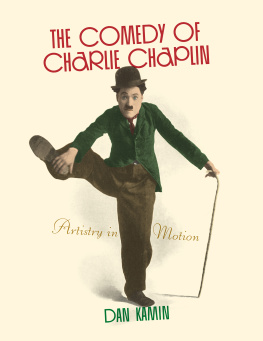
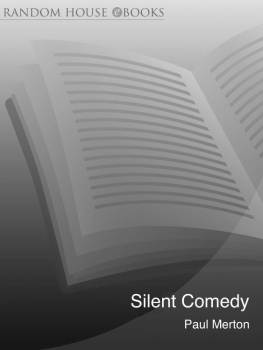

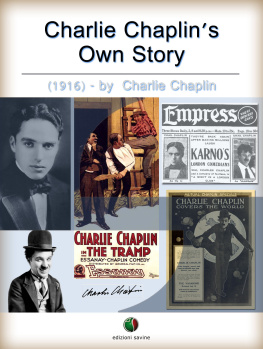
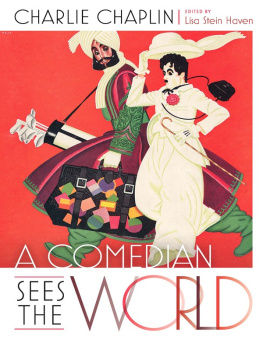

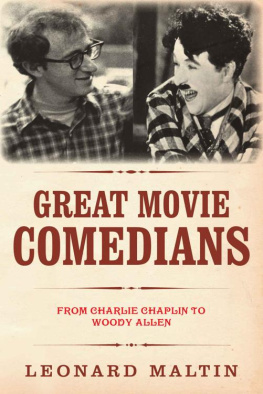
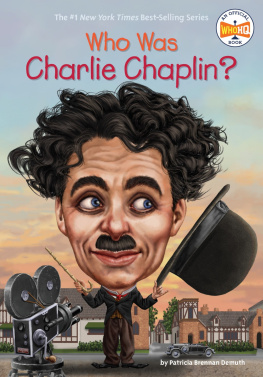
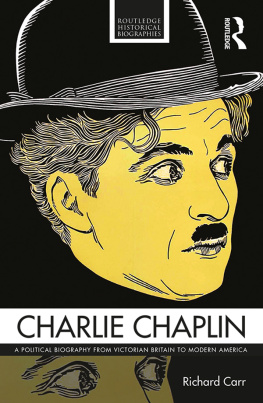
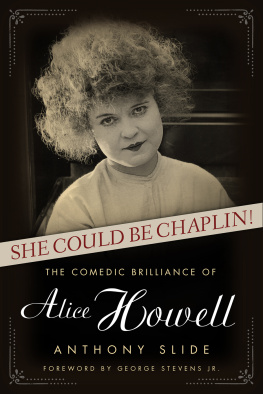


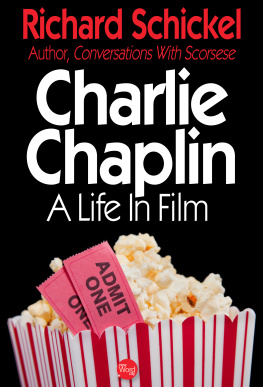
 The paper used in this publication meets the minimum requirements of American National Standard for Information SciencesPermanence of Paper for Printed Library Materials, ANSI/NISO Z39.48-1992.
The paper used in this publication meets the minimum requirements of American National Standard for Information SciencesPermanence of Paper for Printed Library Materials, ANSI/NISO Z39.48-1992.

